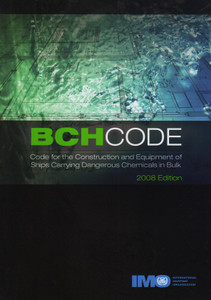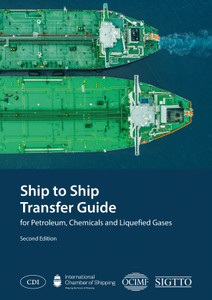
Code for The Construction and Equipment of Ships Carrying Liquefied Gases in Bulk - 1983 Edition
The Code for the Construction and Equipment of Ships Carrying Liquefied Gases in Bulk (GC Code) was developed to provide an international standard for the safe carriage by sea in bulk of liquefied gases and certain other substances. To minimize the risks to ships involved in such carriage, to their crews and to the environment, the Code prescribes the design and constructional features of such ships and the equipment they should carry. The Code generally applies to ships built on or after 31 December 1976 but prior to 1 July 1986. This edition incorporates amendments 1 to 4, including a supplement containing amendments adopted by resolution MSC.32(63) which came into force on 1 July 1998.
1 CODE FOR THE CONSTRUCTION AND EQUIPMENT OF SHIPS CARRYING LIQUEFIED GASES IN BULK
Preamble
CHAPTER I - GENERAL
CHAPTER II - SHIP SURVIVAL CAPABILITY AND CARGO TANK LOCATION
CHAPTER III - SHIP ARRANGEMENTS
CHAPTER IV - CARGO CONTAINMENT
CHAPTER V - PROCESS PRESSURE VESSELS AND LIQUID, VAPOUR, AND PRESSURE PIPING SYSTEMS
CHAPTER VI - MATERIALS OF CONSTRUCTION
CHAPTER VII - CARGO PRESSURE/TEMPERATURE CONTROL
CHAPTER VIII - CARGO VENT SYSTEMS
CHAPTER IX - ENVIRONMENTAL CONTROL FOR CARGO CONTAINMENT SYSTEMS
CHAPTER X - ELECTRICAL ARRANGEMENTS
CHAPTER XI - FIRE PROTECTION AND FIRE EXTINGUISHING
CHAPTER XII - MECHANICAL VENTILATION IN CARGO AREA
CHAPTER XIII - INSTRUMENTATION (GAUGING, GAS DETECTION)
CHAPTER XIV - PERSONNEL PROTECTION
CHAPTER XV - FILLING LIMITS FOR CARGO TANKS
CHAPTER XVI - USE OF CARGO AS FUEL
CHAPTER XVII - SPECIAL REQUIREMENTS
CHAPTER XVIII - OPERATING REQUIREMENTS
CHAPTER XIX - SUMMARY OF MINIMUM REQUIREMENTS
APPENDIX - MODEL FORM OF CERTIFICATE OF FITNESS FOR THE CARRIAGE OF LIQUEFIED GASES IN BULK
2 RESOLUTION A.328(IX) - CODE FOR THE CONSTRUCTION AND EQUIPMENT OF SHIPS CARRYING LIQUEFIED GASES IN BULK
3 RESOLUTION MSC.7(48) - RECOMMENDATION FOR CHEMICAL TANKERS AND GAS CARRIERS CONSTRUCTED BEFORE 1 JULY 1986
4 GUIDELINES FOR THE UNIFORM APPLICATION OF THE SURVIVAL REQUIREMENTS OF THE BULK CHEMICAL CODE AND THE GAS CARRIER CODE
5 TESTING OF SHORE INSTALLATION CARGO HOSES - MSC/CIRC.220
IMO
As a specialised agency of the United Nations, the International Maritime Organization (IMO) is the global standard-setting authority for the safety, security and environmental performance of international shipping. Its main role is to create a regulatory framework for the shipping industry that is fair and effective, universally adopted and universally implemented.
In other words, its role is to create a level playing field so that ship operators cannot address their financial issues by simply cutting corners and compromising on safety, security and environmental performance. This approach also encourages innovation and efficiency.
Shipping is a truly international industry, and it can only operate effectively if the regulations and standards are themselves agreed, adopted and implemented on an international basis. And IMO is the forum at which this process takes place.
- Number of Pages:
- 145
- Published Date:
- January 1983
- Book Height:
- 0 mm
- Book Width:
- 0 mm
- Publication Date:
- January 1983
- Author:
IMO





